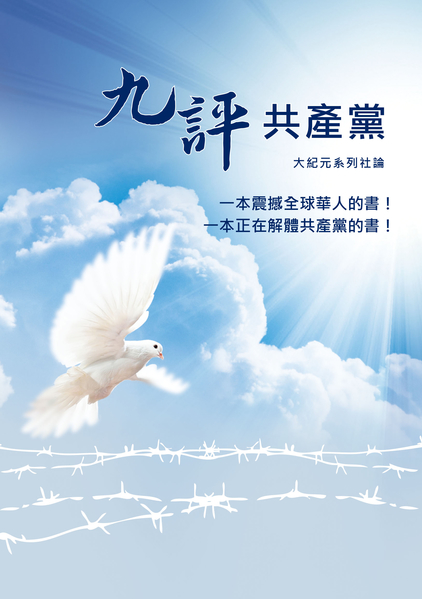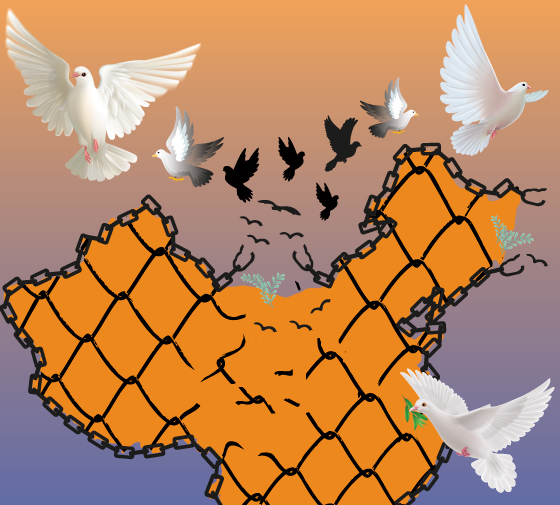
A Hundred Seagulls Shatter China’s Sky Blockage: Two Decades in the Making: the Miraculous Journey of a radio company (Part 1)

When it comes to shortwave radio broadcast to
China, one would naturally think of big names such as Voice of America (VOA),
Radio Free Asia (RFA), BBC and RFI (Radio France Internationale). Indeed,
broadcasting to China is a hugely complicated project involving breaking
through the signal interference from the Chinese Communist Party (CCP). Who
other than these big national broadcasters can pull it off?
However, today’s largest shortwave radio broadcast company, Sound of Hope Radio Network (SOH), is a non-governmental organization. Consists of over 100 stations, SOH’s “seagull broadcasting network” is the result of 20 years of incredible work. Its scale far surpasses that of the national broadcasters.
Here is their story:
In Jan. 2004, a group of Silicon Valley engineers established SOH with the mission to bring uncensored truthful information to China. They were very familiar with VOA, which was established in 1946 and started to broadcast to China in 1956. Over the next few decades, VOA gained a big audience base in China. During the Cultural Revolution (1966-1976), Chinese people hid under the blankets to listen to “the enemy station.” In the 1980s, people listened to the “900 English Sentences” program to learn English. After the June 4th Tiananmen Square massacre in 1989, Chinese people found out what had happened on Tiananmen Square through VOA’s broadcast. To the Chinese people over 30 years old, especially the intellects, shortwave radio meant a great deal to them.
During the last century, listening to shortwave radio was a freedom-seeking act in almost all communist countries, not just in China. Radio Free Europe targeting Eastern Europe and Radio Liberty targeting the Soviet Union were established in 1949 and 1951. Based in Munich, West Germany and Lisbon, Spain respectively, they spread the hope of freedom to the people behind the Communist Iron Curtain of Europe.
The June 1980 Polish Solidarity strike at the Lenin Shipyard in Gdańsk was a strike for freedom, and over the course of 500 days, the news of the strike spread throughout Eastern Europe and the USSR through VOA, Radio Free Europe, and Radio Liberty. 30 percent of the Polish population, or 10 million people, joined Solidarity, making it the most important organization that would catalyze the collapse of the Iron Curtain 10 years later. Pope Paul II from Poland and U.S. President Reagan continued to speak to the people of the Soviet Union and Eastern Europe through shortwave radio, sending support and hope to the people under communist dictatorship. In August 1991, when hardline Soviet communists staged a military coup, the constant shortwave radio broadcasts brought the people of the USSR timely information that resulted in the Soviet people marching to the streets to block the military vehicles. This led to the mutiny of the coup troops, the end of the coup, and the subsequent collapse of the Soviet Communist Party.
In 1989, Walesa, the President of Solidarity, visited the United States and gave a speech in the U.S. Congress. He told the American people about the enlightenment and hope that VOA and other shortwave radio stations had brought to the Polish people, stating: "The Voice of America is to Poland what the sun is to the earth."
The founders of Sound of Hope Radio were keenly aware of such history, and that is where the name came from: to bring hope to the people of China. It was not easy for civilians to engage in shortwave broadcasting to mainland China.
At that time, only national broadcasters were capable of doing shortwave broadcasting to China, and most of them were not open to leasing. Even if they were, SOH didn't have the funds. Even if SOH had the funds, the strong signal interference from the CCP could drown out all the radio frequencies and people could only hear noise.
"At that time, it all seemed impossible because shortwave broadcasting needs hundreds of thousands of watts, and the monthly electric bill would be several tens of thousands. How could we possibly afford it? The only thing we could do at the beginning was to rent a one-hour time slot from Radio Taiwan International and take a step-by-step approach,” said SOH president Allen Zeng.
Not long after they started the lease, they
were presented with a nice surprise. In November 2004, The Epoch Times
editorial "Nine Commentaries on the Communist Party" was published.
The nine-part editorial reveals the evil nature of the communist party from the
perspectives of history, culture, and morality, and points out the harm
communist party has done to China. SOH rushed to produce ten episodes of radio
program and broadcast the entirety of the editorial in 20 days with the rented
time slot from Radio Taiwan International. In the following months, the
broadcast generated huge impact in China. People in Beijing rushed to buy shortwave
radios to listen to the program, causing shortwave radios in Beijing to be sold
out at the time.

"We were very excited about this news. We didn't realize that shortwave broadcasting could be so useful, and it gave us the confidence to keep going," said Zeng.
However, it was not easy to keep going. The success of the "Nine Commentaries" broadcast brought SOH the unwanted attention from the Chinese regime, who mobilized a large jamming radio station to specifically interfere with SOH's broadcasts.
At that time, a resourceful person became aware of SOH’s needs and offered to pay for more broadcasting time. SOH was able to rent more time slots. Within 4 years, SOH was able to rent 25 frequency-hours per day from Radio Taiwan International. SOH became the biggest client of Radio Taiwan International and grew into a medium-sized radio station broadcasting to China.
Then came another round of troubles. The CCP was very uncomfortable with SOH’s growth. It pressured the Ma Ying-jeou administration in Taiwan through diplomatic and civil means to cancel SOH’s lease contract with Radio Taiwan International.
Zeng recalled, "In order to protect our lease, I flew to Taiwan nine times during those years. I also flew to Strasbourg and Washington, D.C. to seek help from the European Parliament and the U.S. Congress. But I could only do so much and in the end, it was to no avail."
In January 2012, Radio Taiwan International unilaterally terminated all 25 hours of lease without any explanation. SOH’s eight-year-long, flourishing broadcast to China went entirely silent.
Recalling the situation, Zeng said, "It was very difficult for us when we encountered this kind of setback, what should we do? Do we give up?"
Of course not!
While negotiating with Radio Taiwan International, Sound of Hope's researchers and developers began to develop a new kind of shortwave radio. They experimented on generating and transmitting shortwave signals using integrated circuits. They also researched the ideal geographic location for the antenna. After solving many technical challenges, the first small radio station was born. Its power was only 100 watts, merely one-thousandth of that of a national broadcaster. About 30 minutes after this radio started transmitting to mainland China, they got the exciting news: the signal was heard in China!
The good news was followed by the bad news: CCP discovered the new radio station and jammed its signal.
Through this experiment, SOH made significant discoveries. First, the mega power radio stations, consuming 100, 300, or even 500 kilowatts, are not a must for shortwave radio, but a result of the 50 years of “arms race” between broadcasters and jammers. Secondly, although a large jamming station can cover a small radio station, it cannot completely "wipe it out." There will always be signals sipping through the jamming frequencies. If they keep increasing the number of small radio stations, and if connected, the small stations together can still reach every corner in China. As a listener inside China, all he needs to do is to turn the frequency nob of the shortwave radio until he finds a surviving signal. This is the way to break the CCP’s seemingly undefeatable decades-long radio frequency jamming.
The antenna of SOH’s small radio station has a
unique look: one straight rod on the bottom divided into two branches on the
top, looking like a seagull spreading its wings. Therefore, it’s called a
seagull radio station.

In the next 15 years, SOH’s volunteer staff in various parts of Asia worked tirelessly to build up the seagull radio network.
The project encountered unimaginable difficulties.
The second part of the story is available here.
*****
Sound of Hope Radio Network (SOH) is a nonprofit organization with 501(c)(3) status. Every $20 donation can give China five minutes of truth.
Read more on the homepage: https://freedomforchina.org
Thank you for your generosity!
Info Phone: 888-851-2128

